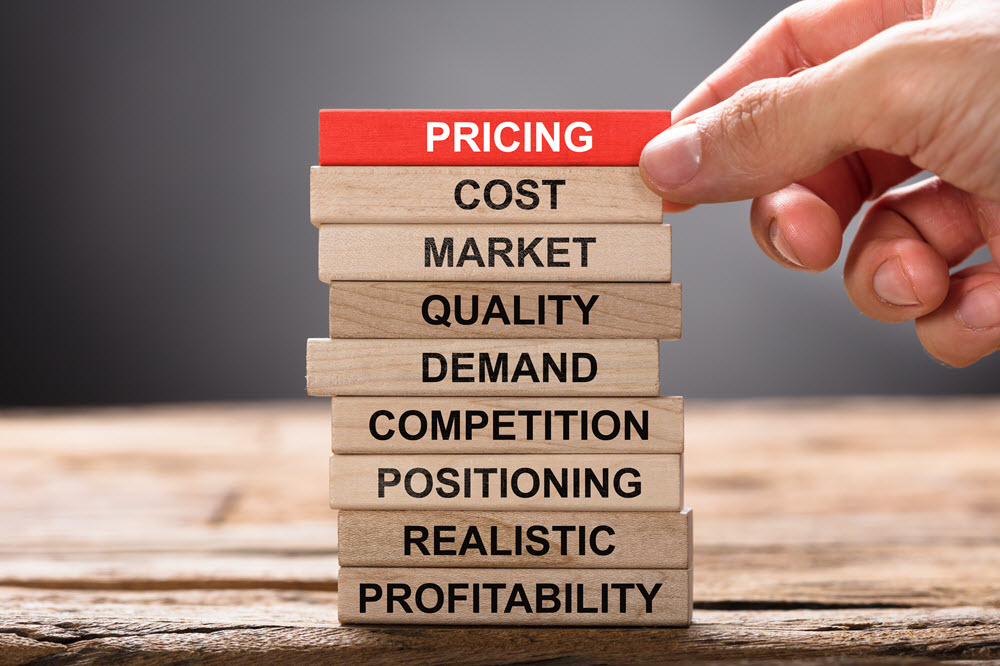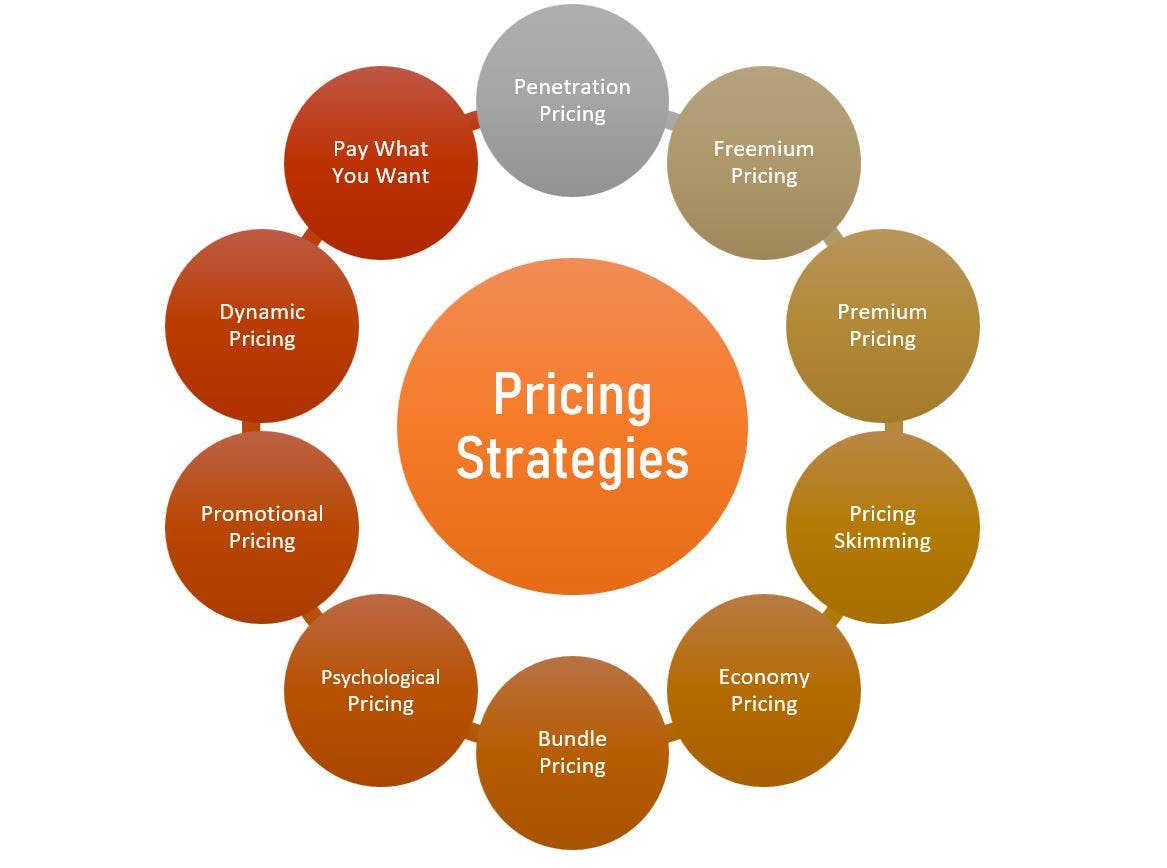How to Execute a Value-Based Pricing Strategy for Optimum Influence
How to Execute a Value-Based Pricing Strategy for Optimum Influence
Blog Article
Optimize Revenue With Proven Rates Approach Techniques
Methods such as value-based pricing, dynamic prices, and complete market analysis can significantly enhance a business's financial performance. Comprehending customer assumption and leveraging information analytics for nimble prices changes are vital parts of this method.
Comprehending Consumer Understanding
Understanding customer understanding is crucial for developing efficient prices strategies. It affects just how consumers assess a product's worth, top quality, and overall attractiveness. Organizations should recognize that consumers usually base their willingness to pay not only on the item's innate qualities however likewise on emotional aspects, including brand name credibility, social standing, and perceived deficiency.

In addition, business must take into consideration the duty of rates psychology, such as charm prices or rate anchoring, which can substantially impact client behavior. Comprehending these perceptions makes it possible for organizations to mount their rates techniques in a fashion that lines up with consumer assumptions while making the most of productivity.
Including customer perception right into prices strategies not just help in establishing affordable prices yet also fosters brand name loyalty, as customers really feel comprehended and valued. Eventually, a nuanced understanding of consumer understanding can cause lasting revenue growth and improved market positioning.
Analyzing Market Trends
To create a reliable rates strategy, assessing market fads is vital for companies seeking to stay affordable. Recognizing the characteristics of market fluctuations allows firms to make enlightened choices relating to prices modifications, item launches, and source allocation - Pricing Strategy. By keeping an eye on consumer behavior, financial indications, and industry growths, organizations can identify patterns that notify their prices frameworks
Seasonal fads can provide insights right into optimal rates during optimal and off-peak durations, permitting for tactical discounting or promotional pricing. In addition, keeping an eye on technical innovations can aid identify prospective dangers or possibilities that could influence prices methods.
Using data analytics devices can improve the precision of pattern evaluation, giving beneficial understandings that assist in agile decision-making. Companies ought to additionally take into consideration carrying out normal marketing research to validate presumptions and adapt to progressing customer preferences. By leveraging these insights, organizations can not just optimize their pricing approaches however also enhance their general market position, making sure lasting success and growth.
Competitive Pricing Strategies
A competitive rates method is essential for services intending to get an edge in a congested market. By examining competitors' pricing frameworks and market positioning, firms can tactically set their costs to draw in customers while preserving productivity. This method calls for a comprehensive understanding of both the affordable landscape and consumer perceptions of value.
One reliable technique is cost matching, where a business offers to match or beat a rival's price. This tactic can enhance consumer loyalty and motivate sales, especially in price-sensitive markets. Furthermore, infiltration rates can be used to record market share by originally setting rates less than competitors, enticing clients to try the product and cultivating brand name understanding.
In addition, services can carry out mental prices methods, such as prices things simply below a round number (e.g., $9.99 rather than $10 - Pricing Strategy.00) This can create the perception of a far better bargain, influencing consumer behavior
Eventually, a successful competitive prices strategy stabilizes the need to continue to be appealing to consumers while making sure that the pricing design lines up with the business's overall goals. Regularly changing and assessing prices in reaction to market shifts and rival actions is necessary for continual success.
Value-Based Rates Techniques
Value-based prices techniques concentrate on setting prices primarily based on the perceived value of a product or solution to the client, as opposed to solely on manufacturing costs or competitor rates. This strategy requires a deep understanding of consumer requirements, preferences, and the distinct benefits that the item or service offers. By identifying the specific value vehicle drivers that resonate with clients, services can develop rates techniques that mirror real well worth of their offerings.
To carry out value-based rates efficiently, firms need to participate in comprehensive marketing research, including consumer surveys and emphasis groups, to collect insights right into customer understandings. Furthermore, businesses ought to segment their consumer base to customize prices approaches that align with different worth assumptions throughout sections.
Interaction plays a critical duty in value-based rates; firms have to articulate the unique value proposition plainly to validate the rate factor. Recurring examination and change are important, as consumer perceptions of value might move over time due to market dynamics or affordable activities. By prioritizing value in pricing strategies, companies can boost consumer contentment, improve commitment, and ultimately maximize income.
Dynamic Prices Models

Dynamic rates leverages advanced formulas and data analytics to keep an eye on rival pricing, customer behavior, and inventory levels. By dynamically adjusting prices, companies can maximize earnings, take full advantage of revenue margins, and respond swiftly to adjustments in the industry. For example, airline companies typically utilize this version to readjust ticket rates based on factors like remaining seats, time till separation, and rival prices.
Nonetheless, the implementation of dynamic pricing must be approached with caution. Clear communication with customers is vital to maintain count on and avoid assumptions of unfair rates practices. Furthermore, companies should make certain that their pricing algorithms are not overly complicated or opaque, as this can result in consumer dissatisfaction.
Ultimately, when carried out attentively, dynamic rates designs can this website provide services with a substantial visite site affordable benefit, enabling them to take advantage of market possibilities while satisfying consumer expectations in a rapidly transforming financial landscape.
Verdict

Strategies such as value-based pricing, vibrant prices, and detailed market analysis can considerably enhance a company's financial efficiency. Seasonal patterns can give understandings into optimal rates throughout peak and off-peak periods, permitting for tactical discounting or promotional prices.Dynamic rates leverages advanced algorithms and data analytics to keep an eye on competitor rates, consumer actions, additional info and stock levels. By recognizing customer understanding, analyzing market fads, and applying competitive pricing techniques, services can efficiently align their prices with customer expectations. Furthermore, value-based pricing and dynamic rates designs enable companies to react agilely to market changes.
Report this page